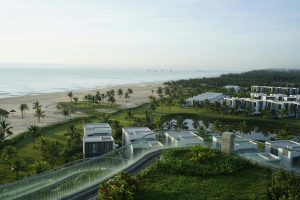Virtual Reality for Property Design and Development
Virtual reality has become a buzzword in recent years, transforming the way we experience the world around us. From gaming and entertainment to healthcare and education, VR technology is revolutionizing various industries. One of the sectors that have embraced this cutting-edge technology is the property development and design industry. Virtual reality has opened up new doors for developers, architects, and interior designers by allowing them to create immersive and interactive experiences for their clients. In this article, we will explore the use of virtual reality in property design and development and its benefits for both professionals and clients.
The Power of Immersive Experience
Virtual reality has the potential to transform the traditional ways of presenting property designs and developments. With VR technology, clients can be transported into a virtual world where they can explore the property in real-time and interact with the design elements. This immersive experience enables clients to visualize the space better and helps them make informed decisions. They can walk through the property, experience its layout, choose the color schemes, and even customize the design according to their preferences.
Efficient Design and Review Process
Traditionally, property designs are created on paper or using computer-aided design (CAD) software. These methods are time-consuming and often lack the ability to present a realistic view of the property. With virtual reality, professionals can create 3D designs and models that can be easily viewed and modified in real-time. This not only saves time but also allows for quick and efficient changes based on the client’s feedback. The design and review process becomes more collaborative and effective, resulting in a better final product.
Cost-Effective Solution
Virtual reality technology has made it possible to create a virtual version of a property before it is even built. This eliminates the need for costly physical models and mockups, saving both time and money for developers and clients. VR technology allows professionals to make changes, experiment with design elements and materials, and make crucial decisions before the construction phase. This reduces the chances of errors and redesigns, which can be expensive and time-consuming.
Enhanced Client Satisfaction
One of the biggest advantages of using virtual reality in property design and development is increased client satisfaction. With traditional methods, it can be challenging to fully convey the design concept to clients, leading to misinterpretations and dissatisfaction. With VR technology, clients can see and experience the property in its full glory, making them more confident in their decision-making. This ultimately leads to happier clients and repeat business for professionals.
The Future of Property Design and Development
In the coming years, virtual reality is set to further transform the property design and development industry. With the continuous advancements in VR technology, professionals will be able to create more realistic and immersive experiences for their clients. This will not only improve the overall design process but also enhance the end product and client satisfaction. Virtual reality will continue to play a pivotal role in the property industry, and its potential for growth is limitless.
In Conclusion
Virtual reality has revolutionized the way property designs and developments are presented to clients. It has brought about a more immersive, efficient, and cost-effective solution for professionals and clients alike. With its ability to offer an unparalleled experience, virtual reality has become an essential tool in the property design and development industry. As technology continues to evolve, it is safe to say that virtual reality is here to stay and will continue to shape the future of property design and development.










